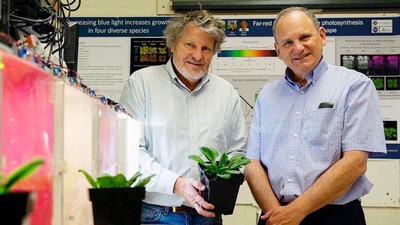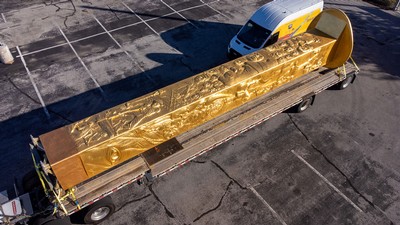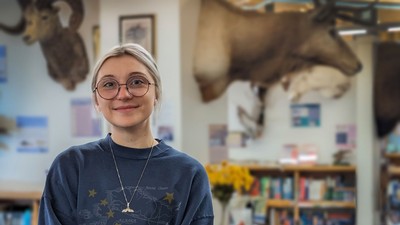Living with Wildfire: USU Ecologist says Collaboration is Key
USU ecologist Jim Lutz, pictured, says people, especially residents of the American West, need to accept the inevitability of wildfire and learn to live with it. He and colleagues published recommendations in 'BioScience' Feb. 2, 2016.
Wildfire is with us, has always been with us and will always be with us.
That’s the consensus of an international, multi-institution team of authors, including Utah State University ecologist Jim Lutz, in an overview article published Feb. 2, 2016, in BioScience.
Article contributors include researchers and managers from the University of Idaho, South Dakota State University, the University of Tasmania, University of California, Berkeley; International Arctic Research Center, USDA Forest Service Rocky Mountain Research Station, Colorado State University, University of Montana, Woods Hole Research Center, University of Alberta, Nevada’s Desert Research Institute, the National Park Service and B.J. Stocks Wildfire Investigations.
“Wildland fire management, particularly here in the American West, is no longer sustainable,” says Lutz, assistant professor in USU’s Department of Wildland Resources and the USU Ecology Center. “We treat fire as a threat, but it’s actually a crucial ecosystem process. As a society, we must become more collaborative in how we respond to wildfire.”
A 2015 report by the U.S. Forest Service reveals more than 50 percent of its annual budget is dedicated to wildfire, up from 16 percent in 1995.
“As more…of the agency’s resources are spent each year to provide the firefighters, aircraft and other assets necessary to protect lives, property and natural resources…fewer funds are available to support…the very programs and restoration projects that reduce the fire threat,” the report reads.
Underlying the economic challenges of wildfire is a complex and interconnected web of social, physical and political factors stymied by educational, organization and research silos,” Lutz says.
“We need a team approach,” he says. “We keep trying to suppress wildfires and contain fire to smaller and smaller portions of the landscape, but we can’t keep this up forever. We must learn to live with fire.”
Lutz has studied wildfire in California’s Yosemite National Park extensively. The fire-active park is one of the case studies of firescape risk-to-resilience cited in the overview article.
“Yosemite makes a relevant study because it’s an example of a landscape at high risk for wildfires with high public use that’s adjacent to an urban interface and rural communities,” he says. “It’s also close to urban populations affected by smoke and sediment-laden water from wildfire areas.”
Science-driven management strategies used in the park aren’t always popular with the public.
“Social acceptance of fire management policies has required a huge educational effort,” Lutz says. “None of us like smoke, yet prescribed burns are necessary to protect the park’s assets.
Here in Utah, as with the rest of the West, persistent drought is becoming increasingly severe and the population is growing.
“As drought continues and our land uses change, we need to accept the inevitability of fire and learn to live with it, rather than resisting it — much as the Dutch have learned to live with water,” Lutz says. “Through collaboration, we can build risk-to-resilience frameworks to keep wildfires from spiraling out of control.”
Related links:
- “USU Ecologist Aids Breakthrough Study of Early Apes’ Forested Habitat,” Utah State Today
- USU Department of Wildland Resources
- USU Ecology Center
- USU Quinney College of Natural Resources
Contact: James “Jim” Lutz, 435-797-0478, james.lutz@usu.edu
Writer: Mary-Ann Muffoletto, 435-797-3517, maryann.muffoletto@usu.edu
The 2002 Johnson Fire in an aspen grove in Utah's Fishlake National Forest. Photo by B. Campbell, U.S. Forest Service.
TOPICS
Ecology 173stories Ecosystems 129stories Land Management 124stories Wildland 97stories Restoration 36storiesComments and questions regarding this article may be directed to the contact person listed on this page.








